Some SPONTANEOUS MUSHROOMS
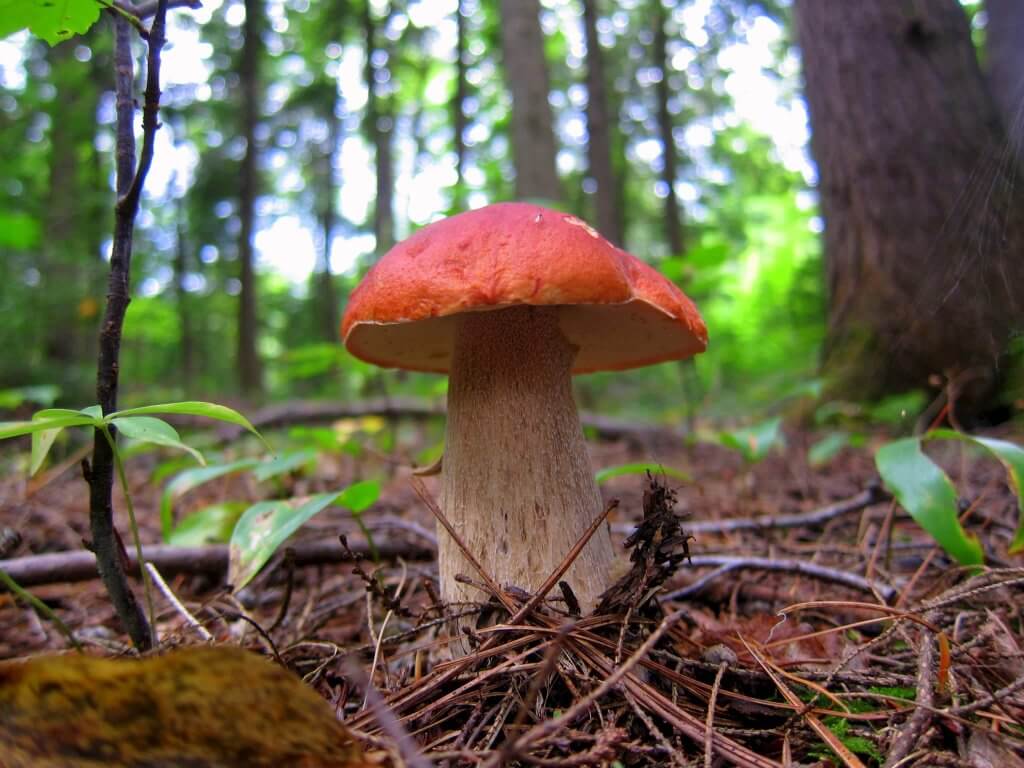
Boletus reticulatus
It is the most precocious of the porcini mushrooms, it is mostly found in the forests of broad-leaved (beech wood, oaks, chest nut) but also in those of conifers (pine forests), being also it a thermophilic species, it has the same habitat of the black porcino; present starting from the late spring up to the late autumn. The colour of the cap is varying from the light brown to the dark brown. The cuticle has a sinuous border, cracked since young in characteristic way forming a reticulum, characteristic for which it has been attributed the name “Boletus reticulatus”.The stem is more thinned that in the other species, it is decorated by a very wide reticulum, sometimes also very in relief; the base colour is from a light hazel to brown, rooting. It is often confused with the edulis, however the cuticle of the cap is “reticulated”, the reticulum wide and in relief and the colour of the stem never white, allows an easy identification of it. Very perfumed meat, unchangeable white also under the cuticle of the cap.
Boletus edulis
It is the most known among the porcini mushrooms. This mushroom prefers fresh habitat, both under forests of broad-leaved and of conifers (red fir wood, abies), it is more common in the north Italy. The colour of the cap can vary from white up to a dark brown and the border always with a clearer edge in comparison to the center of the cap, the surface is viscous and moist, almost greasy. The stem is always of white colour, reticulated (white, brown in maturity).The meat under the cuticle has a winy tint for 0,5-1 mm, solid but less compact than in the prevoius species. typical odour more pronounced.
Boletus pinicola
It is the most known among the porcini mushrooms. This mushroom prefers fresh habitat, both under forests of broad-leaved and of conifers (red fir wood, abies), it is more common in the north Italy. The colour of the cap can vary from white up to a dark brown and the border always with a clearer edge in comparison to the center of the cap, the surface is viscous and moist, almost greasy. The stem is always of white colour, reticulated (white, brown in maturity).The meat under the cuticle has a winy tint for 0,5-1 mm, solid but less compact than in the prevoius species. typical odour more pronounced.
Boletus aereus
It is a mushroom that has a preference for habitat of the Mediterranean forests because it is a thermophilic species (oaks, thermophilic chest nut) present from the level of the sea up to 800 ms., it is located under the broad-leaved, mostly in the south-central Italy; in the north it is less frequent in hilly environment or in the padana lowland in the few relict forests still remained (oaks)
The colour of the cap goes from an olive brown up to the blackish, the surface it is elegantly velvety especially in the first stadiums of growth, then tends to become smooth. The reticulum stem has ochre-coloured surface in the early life stadiums, to reach the dark brown in maturity. Among the porcini mushrooms, it is the one with the most compact meat, white also under the cuticle of the cap, unchangeable. Odor slightly pronounced.
Boletus luteus
This is another mushroom belonging to the family of the boletus, also known with the name of pinarolo for its habitat. Very good if removed the cuticle of the cap and usually consumed with other mushrooms in a good mixture.
Boletus granulatus
Commonly known as pinarolo because it is located in the pine forests. Good edible to which the cuticle is removed because too much viscous.

Lactarius deliciosus
The cap of a red-orange colour, often becomes green with air; it secretes a reddish latex; it has a rather viscous and moist surface and sometimes it has concentric circles; it has dense gills, thin, unequal, present on the stem, of a beautiful orange colour with red reflexes, that can slightly become green to the breakup or by touch. The stem is cylindrical and hollow; light orange, salmon, of the same colour of the cap; its main characteristic, the latex of a carrot colour that it veers to the green with air. It has a fruity odour, pleasant, with vague signs of carrot; the taste is sweetish. They are mushrooms very known since the antiquity and they have a great culinary employment; appreciated especially in the South Italy, in the islands and along the shores for the simple reason that they grow in the pinetes of the most moderate zones of our peninsula; A delight in all the senses…; from the Latin, deliciosus means delicious, for its sweet and delicate taste. Furthermore the mushrooms are considered for excellence in Catalogna, including Balearic, in the Greek islands, in Cyprus and in a lot of zones of the South of France.
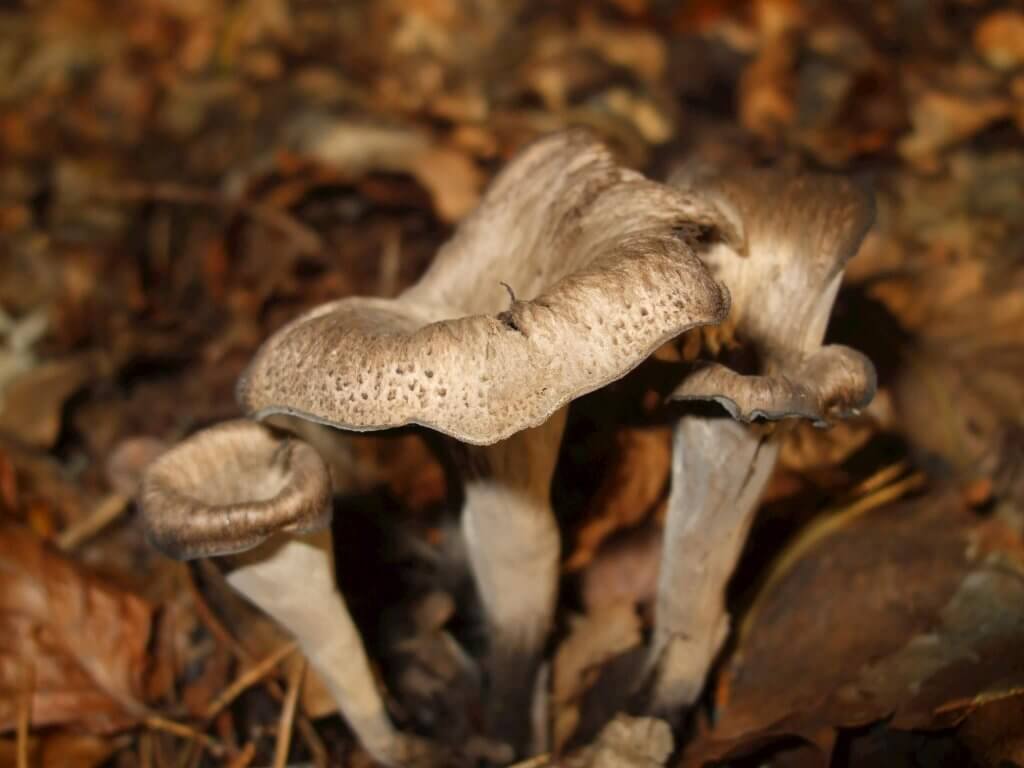
Craterellus corucopioides
It is a spontaneous mushroom, unmistakable not only for the dark colour, black/brown-blackish, but above all for the trumpet shape, similar to a small cornucopia. The inferior part, fertile, is smooth and of a lighter colour, greyish. The meat, thin, is very aromatic to be conferred to the foods an exceptional taste.
Also a simple grilled steak, with a dusting of dry and crumbled trumpets, can result a savory dish! It is one of the most aromatic mushrooms that grows in autumn in the beech wood and in the mixed forests.
It is particularly suitable in the main dishes for risotti, pasta or timballi.
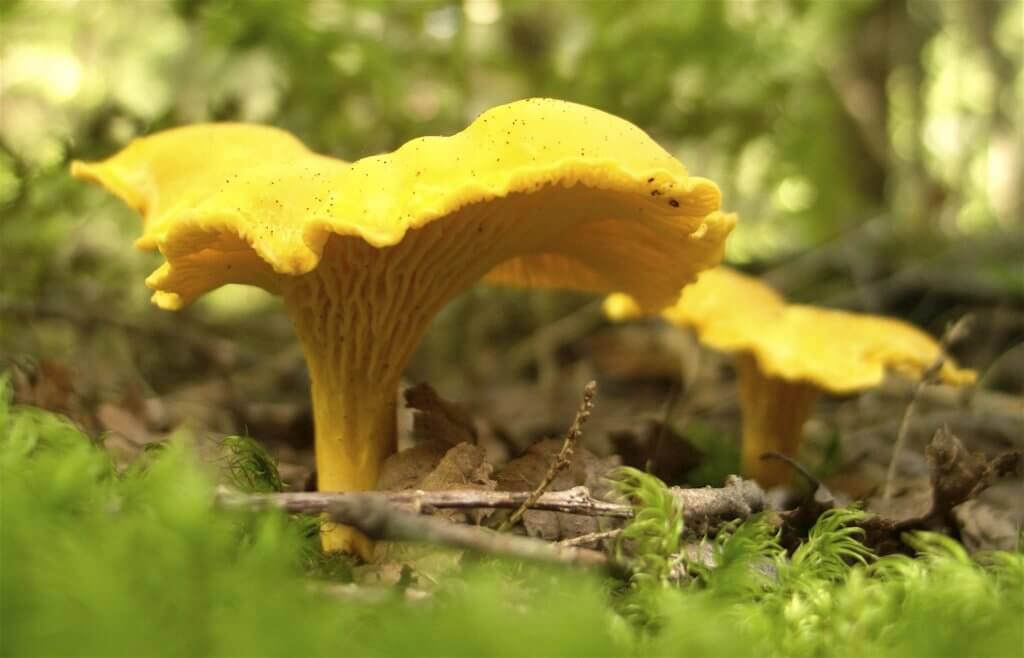
Cantharellus cibarius
It is a very known spontaneous mushroom, welcomed and appreciated all over the world. It is unmistakable for the turbinate and spinning top shape, and for its beautiful uniform yellow/yellow-orange colour. Its meat, always compact, it is almost never verminate. It is ubiquitarian: it grows in the moist forests both of conifers that of broad-leaved. Its intense fruity perfume, as of peach, makes it particularly proper to be cooked with the cream as well as in the preparation of sauces, of meat sauce or stewed with meats, particularly that of pork.

Marasmius oreades
It spontaneously grows in groups of numerous samples in lawns, from the lowland to the mountain. You always recognize it for the light colour, ochraceous and the whitish gills, very ranged. The meat emanates a delicate and pleasant perfume of almonds. Despite its small dimensions, it has an aroma and a taste that make it ideal for varied gastronomic uses; they are excellent for risotti or pasta dishes, bruschettas or crostonis, stewed meats, sausages, sauces etc..
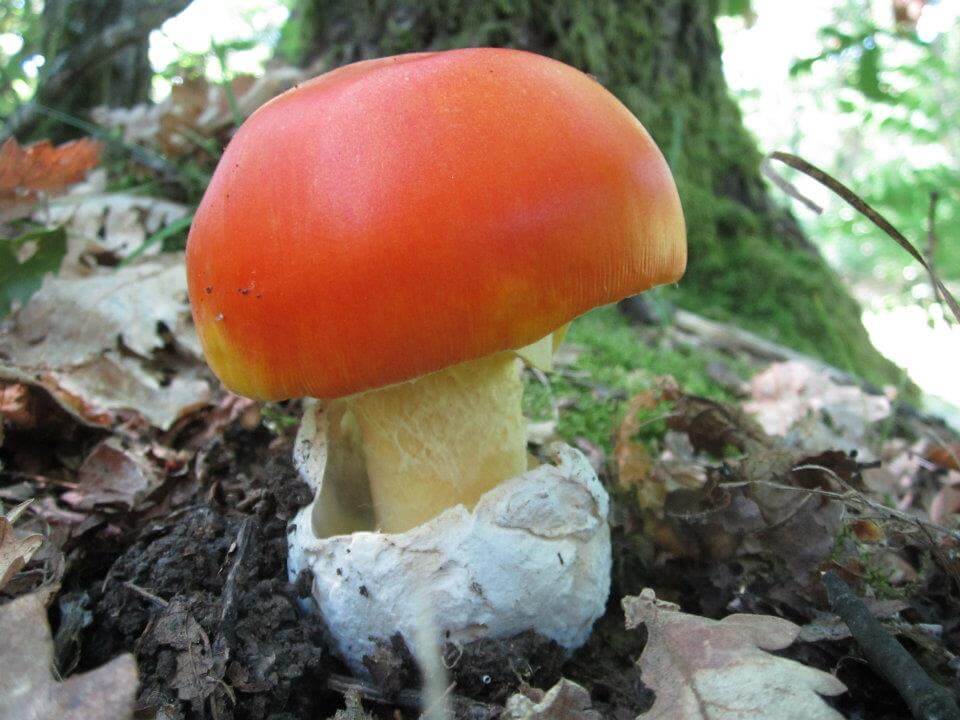
Amanita caesarea
The good ovolo is one of the most sought mushrooms for its goodness and delicacy; this species, appreciated since the antiquity, remains still today the mushroom more admired and desired…the true prince of the table can be tasted in recipes that have simple but refined taste. How to resist to the beauty and the goodness of this species! The bright colours, the orange, the gold yellow and the white put particularly in prominence the harmony and the shape of this mushroom.
When it is a young exemplary, it resembles a lot to a yolk of egg surrounded by a candid egg white; growing, it assumes the shape of a splendid umbrella of the colours of the sun. It is excellent for:
carpaccio (cutting it in thin slices with oil, lemon and flakes of parmesan cheese of your choosing) risotto and so many other recipes…

Morchella
It is among the best mushrooms in absolute, it is very appreciated by the connoisseurs for their characteristics and savory taste. Unmistakable for their aspect “spongy”, this commercial species has a coloration that goes from the light brown, depending on the species. to brownish. It spontaneously grows on the borders of the forests of conifers, broad-leaved or on woody residuals of these trees.
The morel mushrooms are sought not only in Italy: from centuries they are part of the traditional French and Swiss kitchen. The “fillet to the morels” is in fact one of the most demanding dishes beyond the Alps. In the Italian cuisine they are indicated in the main courses with pasta or rice, or cooked with eggs, meat and fish.

Calocybe gambosa
It is one of the first mushrooms to appear in spring and to this it refers the name with which it is known from everyone, mushroom of St. George (the recurrence of the Saint falls on April 23). Its peculiar characteristic is the growth in lawns, in line and in circles. Numerous legends were born in the centuries to explain this “mysterious” phenomenon;
some sustain that deal with “witches circles”, formed in the place in which they have danced the witches.
Actually the phenomenon is totally natural: the micelio has the tendency to branch out in all the directions, so that in the center the oldest part remains, while in edge the carpophores(or rather the mushrooms that we know) are developed, forming a circle that expands itself from year to year. The mushroom of St. George is one of the most savory mushrooms; excellent grilled, in omelet and with rice.

Hydnum repandum
This mushroom can reach also notable dimensions; its cap of opaque orange colour has a very variable shape; very compact and fleshy, with white meat and dry cuticle. Under the cap, instead of being covered by thin gills, it has a lot of small fleshy thorns, said stings, a little bit clearest of the cap. The stem is full and of variable shape, the colour is white or orange and often not centered in comparison to the cap.
The perfume is soft; the young samples have an excellent taste. The Steccherino is a mushroom with compact pulp also after a prolonged cooking; therefore it is better to cut it in very thin slices, before proceeding to the cooking.
It is a mushroom that enriches notably the taste of the mixture and, elegantly minced, it can be the base for a perfect meat sauce of mushrooms.

Armillariella mellea
It is a small mushroom with a fleshy cap, of variable colour from the light yellow to olive, from the grey to the reddish, flattened, entirely covered by small darker squamas, brownish; the gills are hooked and slightly visible on the stem that is of whitish colour, full, hard, fibrous and with ring sometimes slight visible; the pulp is slightly bitter and slight perfumed.
It grows in groups of numerous samples, at the base of old trunks or stumps in autumn; the connoisseurs prefer the honey mushroom grown at the feet of mulberries, elms and black locust trees rather than those of mountain born on firs. You can cook them trifolati, with high heat or with other mushrooms or preserved in oil. In honey mushroom it is good only the cap because the stem is slightly leathery. Note: a pre-boiling of few minutes before their preparation is advisable and that will give the pleasure to taste some mushrooms of excellent taste to the customers.
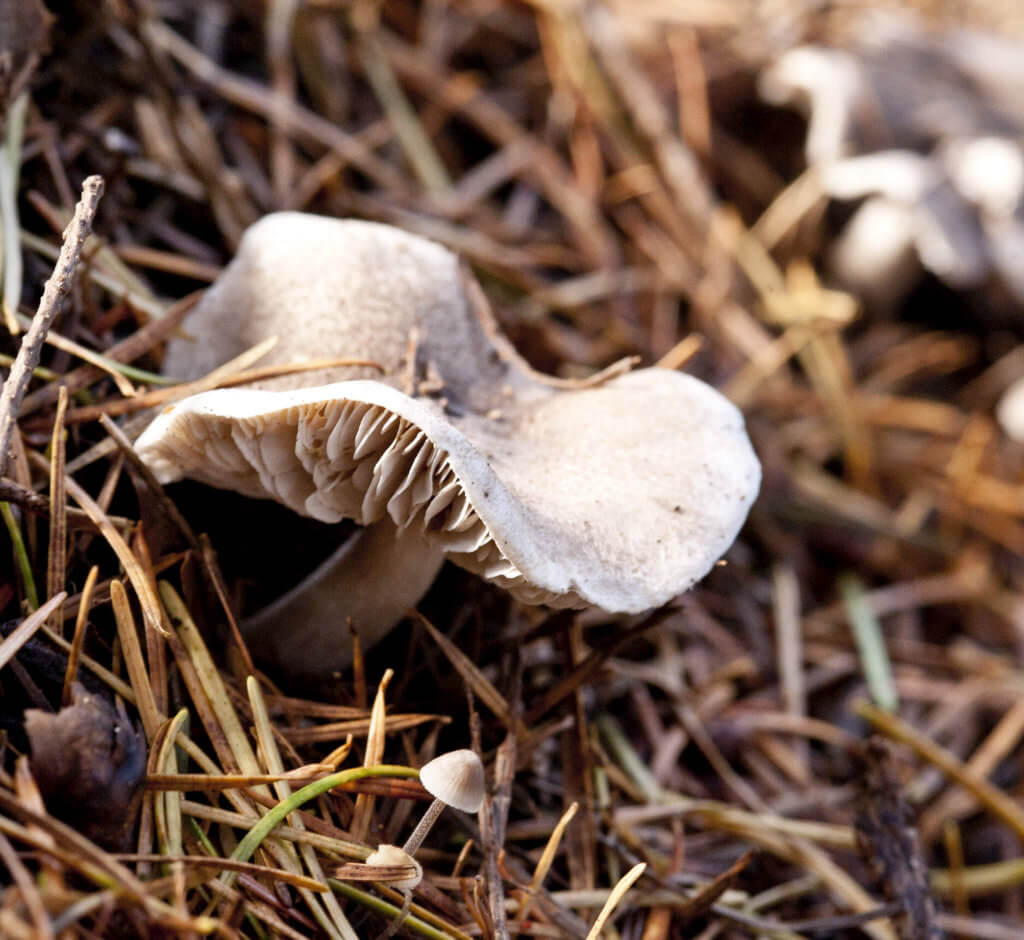
Tricholoma terreum
This mushroom appears in summer-autumn period it is vulgarly called “moretta”. Very frequent in the forests of conifers (pine forests, abies), where it is usually present in numerous samples. Cap is umbonate, covered by numerous silky squamas that gives an opaque aspect of it, the colour is grey. Whitish stem, fragile. Not very known, but of good quality above all if it is in oil.

Xerocomus badius
The cap (3-15 cms) is generally dark brown chestnut colour or brown reddish with initially whitish tubules, then from yellow olive to green olive and blue by touch; the stem with clearer colorations of those of the cap, felted-brownish, without reticulum; the meat from white to bright yellow, veering to the blue when you cut it; it has a thick size; it is always easy to recognize it, for the whole of its characteristics, that we have seen and that are nearly constant; another of its characteristics is represented by the fact that, even if being a land species, it almost always born in proximity, or near the trunks. The fresh mushroom has a pleasant perfume weakly fruity.

Cantharellus lutescens
It spontaneously grows in groups of numerous samples in moist forests of conifers and more rarely in those of broad-leaved. It is unmistakable for the slender shape simil to a trumpet, with the crested “cap”on top, brownish, and at the bottom quite smooth, yellow-orange as of the long and slender stem. Despite chanterelles are not so fleshy, they possess an unbelievable aroma and taste and they are particularly proper in the preparation of dishes of rice, pasta, soups, omelets, braised or stewed of meat. They are very tender and, if preserved at dry state, it is enough a soaking of few minutes to make them return as fresh!
Some CULTIVATED MUSHROOMS
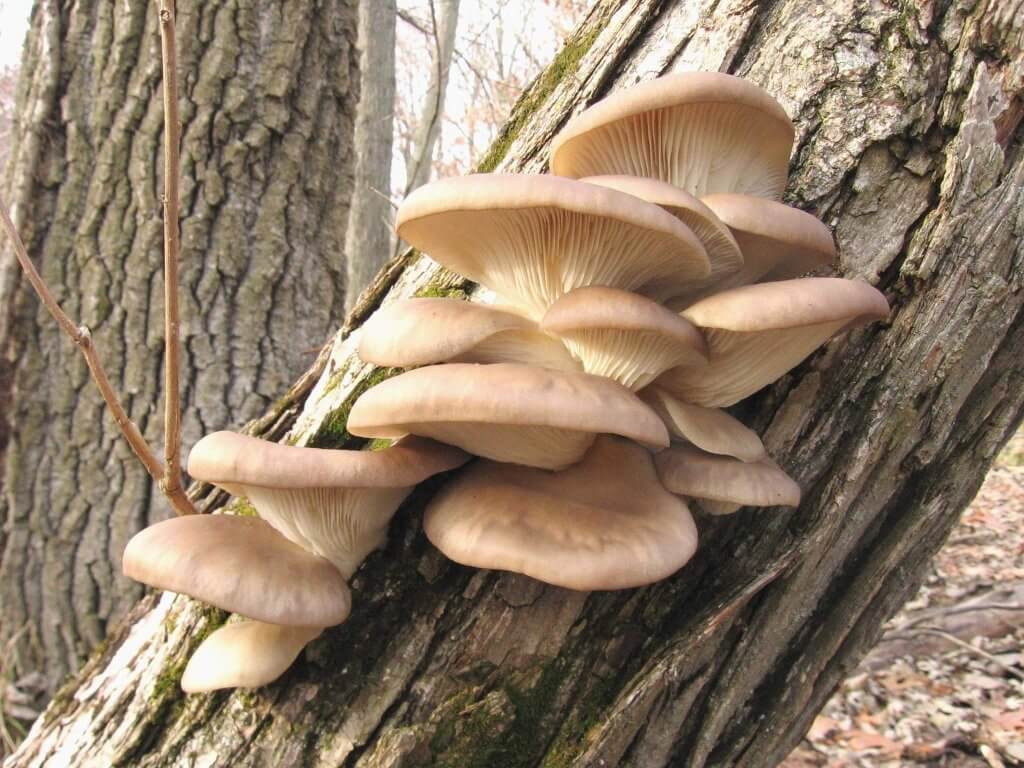
Pleurotus ostreatus
It often resembles to a whole of shells or oysters (from which it takes the Latin name “ostreatus”) that appears from the tree to which is attached; it is born on different arboreal essences and more frequently on trunks of poplars and willows. The small samples are often bluish; as the carpophore grows, the coloration changes toward a grey-brownish. It is a mushroom of great dimensions, the cap, always lateral, can also reach the ampleness of about thirty centimeters; it is a very sought mushroom and it is particularly tasty if grilled.

Agaricus bisporus
Among the treasures that the nature can donate, the Champignon mushroom is perhaps one of the most precious, amazing and… genial!!! Precious for the abundance of its nourishing values (mineral salts, proteins, vitamins, etc.); amazing because it has a low caloric intake and a low fat content; finally genial, because a pinch of imagination it is enough to create very different recipes. When they are dry, they are very savoury.
Champignons, both those whites that the other variety of a dark cream colour, are known, cultivated at a global level, consumed since the eight hundred century, unmistakable, sure and always perfect; the Champignon mushrooms that Merlini proposes, are selected and really tasty; Champignon, therefore, deserves a protagonist place in the Mediterranean nutrition, by now recognized as one of the most healthy and savory of the world.
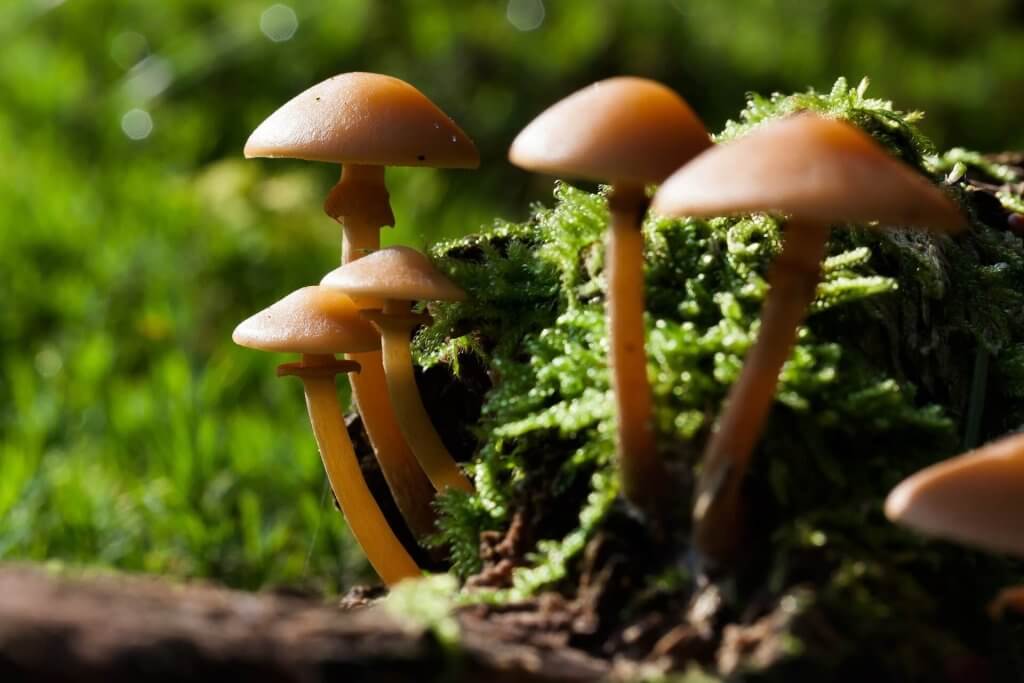
Pholiota nameko mutabilis
It is a mushroom known as honey mushroom and it is considered tasty and edible. We can find it in very numerous groups on old trunks, especially in the Summer. The cap is hygrophanous, therefore of variable colour according to the moisture, always smooth. The stem is of the same colour of the cap, with membraneous ring precociously fleeting. The gills are dark yellow-cinnamon. The meat is whitish with a pleasant fungal perfume.
Curiosity: from the Latin mutabilis = mutable, for its hygrophanous property , that makes it change colour when the moisture varies.

Lentinus edodes
Of Japanese origin, it derives from the popular name of the tree (“shii”, Castanopsis cuspidata) near which the mushroom (“take”) frequently grows in the oriental regions of Asia (China, Japan, Korea, etc). The Lentino is one of the oriental mushrooms scientifically studied from more time for its therapeutic properties, appreciated in the oriental popular medicine. Of tender consistence and therefore of rapid cooking, the Shii-take is an excellent and very tasty mushroom; they are mushrooms of good taste, of good quality and in the international kitchen they are often combined to the preparation of vegetables, legumes, pasta and meat. Excellent in the soup or in the chicken broth.

Auricularia auricula-judae
It is known with the name of auricle for its shape. It is also found in nature on woody residuals of some broad-leaved (elder, locust tree etc.). It is a mushroom with therapeutic properties.


